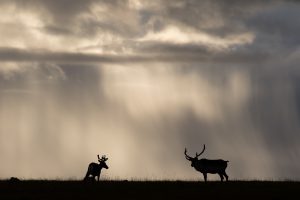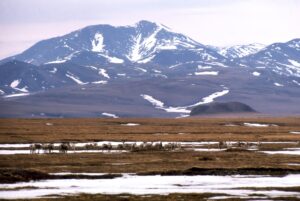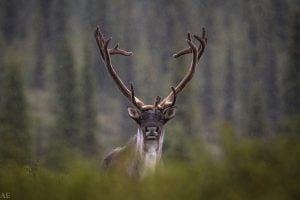Three Quebec First Nations are stepping in to help save an endangered caribou herd after the provincial government said it would take no further action to stop the herd’s decline.
On Thursday, the Lac Simon Anishinabe Nation, together with the First Nations of Kitcisakik and Long Point, announced they will receive $1.26 million over five years from the federal government to implement measures to protect the Val-d’Or woodland caribou herd.
“Biodiversity is very important to Indigenous communities, and we believe that all species deserve to be protected,” said Geneviève Tremblay, a biologist with the Lac Simon Anishinabe First Nations Council. “We are all very concerned about the situation with the herd, and so we want to develop this project together and collaborate to achieve the desired results.”
The fate of the herd, which roams the forests of Abitibi-Témiscamingue and currently numbers just 18 animals, has been the subject of intense debate in recent months. Last spring, Quebec’s Minister of Forests, Luc Blanchette, put forward an unpopular proposal to move the herd to a zoo. The zoo quickly backed away from the idea following an outcry from biologists and environmental groups, and in March, Blanchette announced the province would not undertake further efforts to protect the herd, citing high costs and a low chance of success.
The First Nations instead went to Environment and Climate Change Canada, citing the federal government’s obligations under the Species At Risk Act. Since receiving the funding commitment, Tremblay says, they have had productive discussions with the province. Among the protective actions they plan to take are a reforestation project to restore and reconnect caribou habitat, predator control measures and ongoing research into the needs and status of the herd.
Tremblay noted the First Nations have long ceased hunting the Val-d’Or herd due to its critically low numbers.
“Ultimately, we would like the caribou population to be healthy enough to support, at best, a communal hunting activity where we would designate one or two individuals to maintain the cultural link between the Anishinabe community and the caribou,” she says.
Provincial action still needed
Greenpeace Canada, which has long campaigned for action on endangered caribou in Canada, congratulated the First Nations on their leadership but said it’s still up to the Quebec government to balance the needs of the resource sector with the needs of the caribou.
“This government really needs to step up, whether it’s with investment or simply by moving away from the dichotomy that’s been created between the environment and the economy,” says Olivier Kolmel, a Montreal-based forest campaigner with Greenpeace Canada. “Market demand is increasing for sustainable forest products, which means respecting Indigenous rights and protecting biodiversity.”
The federal government has recently shown its willingness to put pressure on the provinces to develop range plans for endangered caribou in their jurisdictions. The fact that they are forging partnerships with First Nations is an encouraging sign that they’re serious about meeting their goal to protect 17 per cent of Canada’s terrestrial lands by 2020, Kolmel says.
“If we’re talking about biodiversity and protecting our lands, this has to come with reconciliation work with Indigenous communities,” he says. “We really need to listen and not just consult.”




